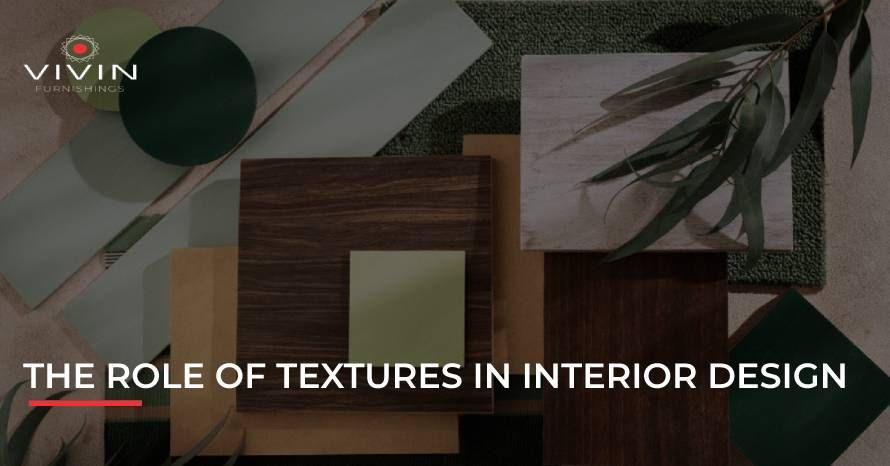
The Role of Textures in Interior Design
Textures play a crucial role in interior design as they can add depth, dimension, and interest to a space. Whether it’s a rough brick wall or a soft velvet sofa, textures can evoke a wide range of emotions and add visual appeal to any room. In this blog post, we will explore the importance of texture in interior design and how it can be used to create a unique and inviting space.
Wall Texture
Wall texture is an excellent way to add depth and dimension to a room. Textured walls can be achieved through various techniques, such as painting with a textured roller, using wallpaper with a raised design, or adding a plaster finish. Each technique can create a different look and feel to a room, adding interest and character.
A textured wall can also serve as a focal point in a room, providing a backdrop for artwork or furniture. For example, a rough brick wall can give an industrial feel to a space, while a textured wallpaper with a botanical design can add a natural element to a room.
Furniture Texture
Furniture texture is another way to add interest and depth to a space. Whether it’s a leather sofa, a plush velvet chair, or a woven basket, furniture textures can evoke different emotions and add a tactile element to a room.
In addition to adding visual appeal, furniture textures can also affect how comfortable and cozy a space feels. For instance, a soft, plush sofa can make a room feel cozy and inviting, while a sleek, modern leather sofa can add a sense of sophistication and elegance.
When selecting furniture textures, it’s essential to consider the overall style and aesthetic of the room. A rustic, farmhouse-style space may benefit from furniture with a distressed or weathered texture, while a minimalist, contemporary space may benefit from furniture with a smooth, polished texture.
Interior Texture
Interior texture encompasses all the different textures in a room, from the walls to the flooring, furniture, and accessories. Creating a cohesive texture scheme is crucial in creating a well-designed space that feels inviting and comfortable.
One way to balance textures is to create a neutral base and then layer in textures. For example, a neutral room with a plush area rug, a textured throw pillow, and a few decorative objects can create a cozy and inviting space.
Texture in Interior Design:
Texture plays a crucial role in interior design, as it can add depth, interest, and personality to a space. There are several ways to incorporate texture into a design, including:
- Layering textures: Mixing textures, such as a plush rug with a leather sofa, can add depth and interest to a room.
- Contrasting textures: Contrasting textures, such as a smooth glass table with a rough-hewn wooden coffee table, can create a dynamic and visually interesting space.
- Playing with scale: Playing with the scale of textures, such as a large, chunky knit throw blanket on a small chair, can create a unique and unexpected look.
- Adding natural textures: Adding natural textures, such as wood, stone, and plants, can add warmth and texture to a space.
- Using texture to create a focal point: Using a textured wall or a piece of textured art can create a focal point in a room.
In conclusion, textures play a crucial role in interior design, from wall texture to furniture texture to interior texture. By incorporating textures into your design, you can create a dynamic and visually interesting space that reflects your personality and style. Remember to balance textures, mix and contrast textures, and play with scale to create a cohesive and visually
Contact Vivin Furnishing to know about the latest trends in interior design., we provide our services all over the australia with best quality material to provide best interior Design Services